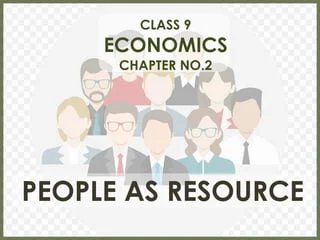The Story of Village Palampur - Class 9
The Story of Village Palampur is a fictional account of a typical Indian village, providing insights into rural life, agriculture, and economic activities. It explores the challenges and opportunities faced by villagers, highlighting their dependence on agriculture and the impact of modern development on their traditional way of life. Key themes in the story include: Agriculture: The importance of agriculture in the village economy, including crops, livestock, and farming practices. Land ownership: The distribution of land among different social groups and its impact on livelihoods. Rural development: The role of government programs and initiatives in improving the lives of villagers. Social and cultural aspects: The social structure, customs, and traditions of village life. Challenges and opportunities: The challenges faced by villagers, such as poverty, lack of access to services, and the impact of globalization. The story offers a glimpse into the complex realities of rural India, providing students with a deeper understanding of the issues and challenges faced by rural communities. দ্য স্টোরি অফ ভিলেজ পালমপুর একটি সাধারণ ভারতীয় গ্রামের একটি কাল্পনিক বিবরণ, যা গ্রামীণ জীবন, কৃষি এবং অর্থনৈতিক ক্রিয়াকলাপ সম্পর্কে অন্তর্দৃষ্টি প্রদান করে। এটি গ্রামবাসীদের সম্মুখীন হওয়া চ্যালেঞ্জ এবং সুযোগগুলি অন্বেষণ করে, কৃষির উপর তাদের নির্ভরতা এবং তাদের ঐতিহ্যবাহী জীবনযাত্রার উপর আধুনিক উন্নয়নের প্রভাব তুলে ধরে। গল্পের মূল বিষয়গুলির মধ্যে রয়েছেঃ কৃষিঃ গ্রামীণ অর্থনীতিতে ফসল, গবাদি পশু ও কৃষিকাজ সহ কৃষির গুরুত্ব। জমির মালিকানাঃ বিভিন্ন সামাজিক গোষ্ঠীর মধ্যে জমির বন্টন এবং জীবিকার উপর এর প্রভাব। গ্রামীণ উন্নয়নঃ গ্রামবাসীদের জীবনযাত্রার উন্নতিতে সরকারি কর্মসূচি ও উদ্যোগের ভূমিকা। সামাজিক ও সাংস্কৃতিক দিকঃ গ্রামীণ জীবনের সামাজিক কাঠামো, রীতিনীতি এবং ঐতিহ্য। চ্যালেঞ্জ এবং সুযোগঃ দারিদ্র্য, পরিষেবাগুলিতে অ্যাক্সেসের অভাব এবং বিশ্বায়নের প্রভাবের মতো গ্রামবাসীদের সম্মুখীন হওয়া চ্যালেঞ্জ। গল্পটি গ্রামীণ ভারতের জটিল বাস্তবতার এক ঝলক দেয়, যা শিক্ষার্থীদের গ্রামীণ সম্প্রদায়ের সমস্যা এবং চ্যালেঞ্জগুলি সম্পর্কে গভীর ধারণা প্রদান করে।
English
Last updated
Wed, 27-Nov-2024



















